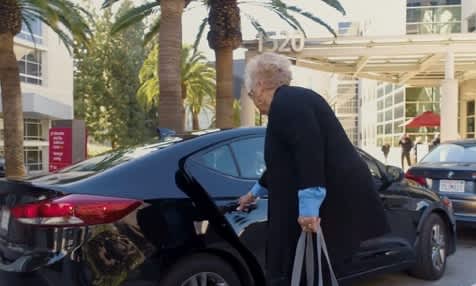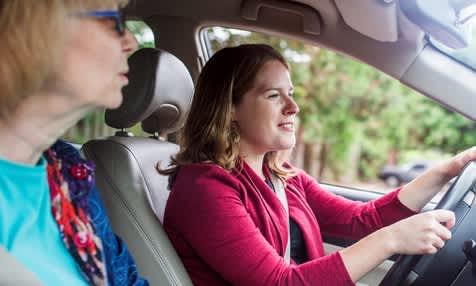How Royal Care Connect is transforming the patient experience
INDUSTRY | HEALTHCARE
Challenge
Patient flow at Alameda Health System’s Highland Hospital was chronically slow because many patients lacked transportation home or to the next stage of their care. The problem contributed to extremely long emergency room wait times and overcapacity.
Solution
Royal Care Connect provides reliable, on-demand transportation for ambulatory patients across the health system by implementing Lyft Concierge in its call center.
Impact
- 50% reduction in emergency room diversion rates, as a result of improved patient flow (Source: Alameda County Emergency Medical Services Agency)
- $400,000 in annual health system savings for ambulatory transportation, compared to using taxi vouchers
- 73% reduction in no shows from ambulatory care clinics
The solution to a hospital patient flow problem? Better access to transportation for ambulatory patients.
Royal Care Connect started as an ambulance company serving California’s Bay Area. It has evolved into a managed transportation hub that helps hospitals run more efficiently while putting the focus squarely onto human-centric, value-based patient care.
As the healthcare industry recognizes the central role that the patient experience plays in health outcomes, Royal Care Connect leaders are elevating that experience in innovative ways—from redesigning ambulance interiors, to streamlining hospital patient flow.

The challenge
In 2012, The Waiting Room, an award-winning documentary, brought problems at Alameda Health System’s Highland Hospital in Oakland to international attention. The hospital was known for extremely long emergency room (ER) wait times and what’s called diversion—a state where the ER redirected ambulances to other hospitals because it was over capacity.
Patient flow was part of the problem. Many patients were unable to leave the hospital because they didn’t have a ride home or to the next stage in their care. Transportation was a major barrier for the public hospital’s many low-income, housing-insecure patients.
Hospital case managers struggled to coordinate discharge rides. The process was chaotic and stressful for patients, who often had trouble getting to primary care center visits, as well — a problem that contributed to the ER’s overcapacity.
“There’s a need for removing bottlenecks and increasing efficiency in today’s healthcare systems. Transportation has traditionally been a major barrier as a social determinant of health. We’re looking to remove this barrier for everyone.”
— Trevor Hardee
Director of Customer Success at Royal Care Connect
The Opportunity
Royal Care Connect incorporated rideshare into its medical transportation solution for Alameda Health System. The company would act as a central hub for patient transportation needs—from ambulatory, to wheelchair-accessible, to basic life support and critical care.
After considering rideshare options, Royal Care Connect partnered with Lyft Business because of the company’s expertise in the healthcare space.
The Solution
Today, Royal Care Connect has helped improve the way patients flow through Alameda Health System facilities. The customer success team simply inserted Lyft Concierge into the call center workflow, eliminating the need for training or account management for hospital or clinic staff.
With a single phone call, patient case managers can schedule transportation for all levels of patient needs. Ambulatory patients can use their smartphones to see a map and their Lyft driver’s estimated time of arrival. Royal Care Connect works with its health system partners and Lyft to customize processes that work for patients who don’t have smartphones.
Royal Care Connect also gives patients the option of flexible rides. After appointments, they can make trips to the pharmacy or the lab and then click on a link when they’re ready to request a ride home.
TOP BENEFITS INCLUDE
Reduced ER diversion rates
Using Lyft Concierge, Royal Care Connect staff help move ambulatory patients out of the ER and on to other hospitals, back home, or to the next stage of their care. As patients gain improved access to primary care, fewer low-acuity patients make the ER their go-to, and the ER is able to focus on emergency cases.
“With Royal Care Connect’s transportation hub model, Alameda Health System saw an increase in patient throughput, a decrease in no-show or rescheduled appointments due to transportation issues, and more than a 50% decrease in ER diversion rates, when ambulances are unable to drop off patients due to over-capacity.”
Increased patient confidence
When primary care clinics offer Lyft rides as part of the appointment confirmation process, it builds trust and creates hope. Patients who would otherwise struggle to get a ride are more likely to get to those appointments.
“Prior to the project, patients had to wait an average of 90 minutes for an ambulatory transport. Now the average wait time is seven minutes or less. In the primary care setting, Lyft has allowed us to shift patient perceptions. It’s a way of showing up for our patients in a way that they can believe truly that they are cared for.”
Valuable insight into transportation spending
Before Lyft, Alameda Health System used a taxi voucher system that lacked oversight or a way to validate the cost of each ride. Lyft Concierge offers the team unique insight into how health systems can improve patient service, as well as increased accountability for how transportation dollars are being spent.
“We see real value in providing the health system a heat map of common discharge zip codes, or the average distance people have to travel to access primary care.”
Significant bottom-line improvements
Patients were quick to adapt to Alameda Health System’s ride share program, using an average of 60 rides per day. As patients gain better access to primary care, the health system benefits strategically and financially, while improving the patient experience and overall health outcomes.
“As a result of Royal Care Connect’s partnership with Lyft, our health system customers saw about $400,000 in savings in the first year, compared to using taxi vouchers. In one example, a primary care clinic reduced their patient no show rates by 73%, increasing staff utilization and reducing avoidable readmissions.”
Looking Ahead
Royal Care Connect is forging new ground in the way it engages its healthcare customers, objectively aligning with their goals and the goals of the communities they serve. The team relies on Lyft to help them continually improve processes and fill the gap between patients and providers. Going forward, Royal Care Connect leaders anticipate integrating the Lyft Concierge API into hospital health records systems so that staff can order Lyft rides on their own. “There are many opportunities for us to do more with Lyft,” says Trevor Hardee, Director of Customer Success at Royal Care Connect.
See how Lyft Business helps other businesses transport their people.


